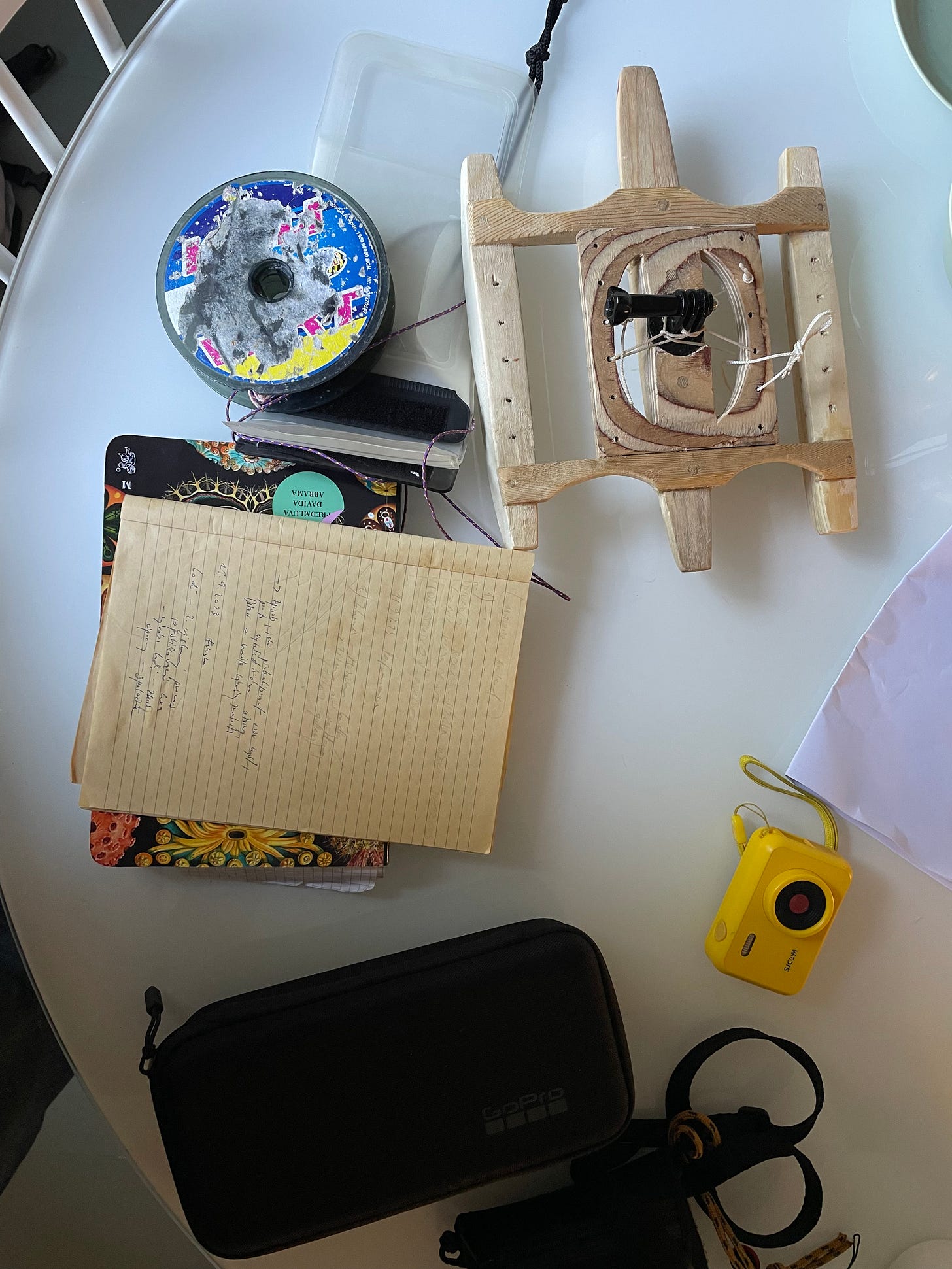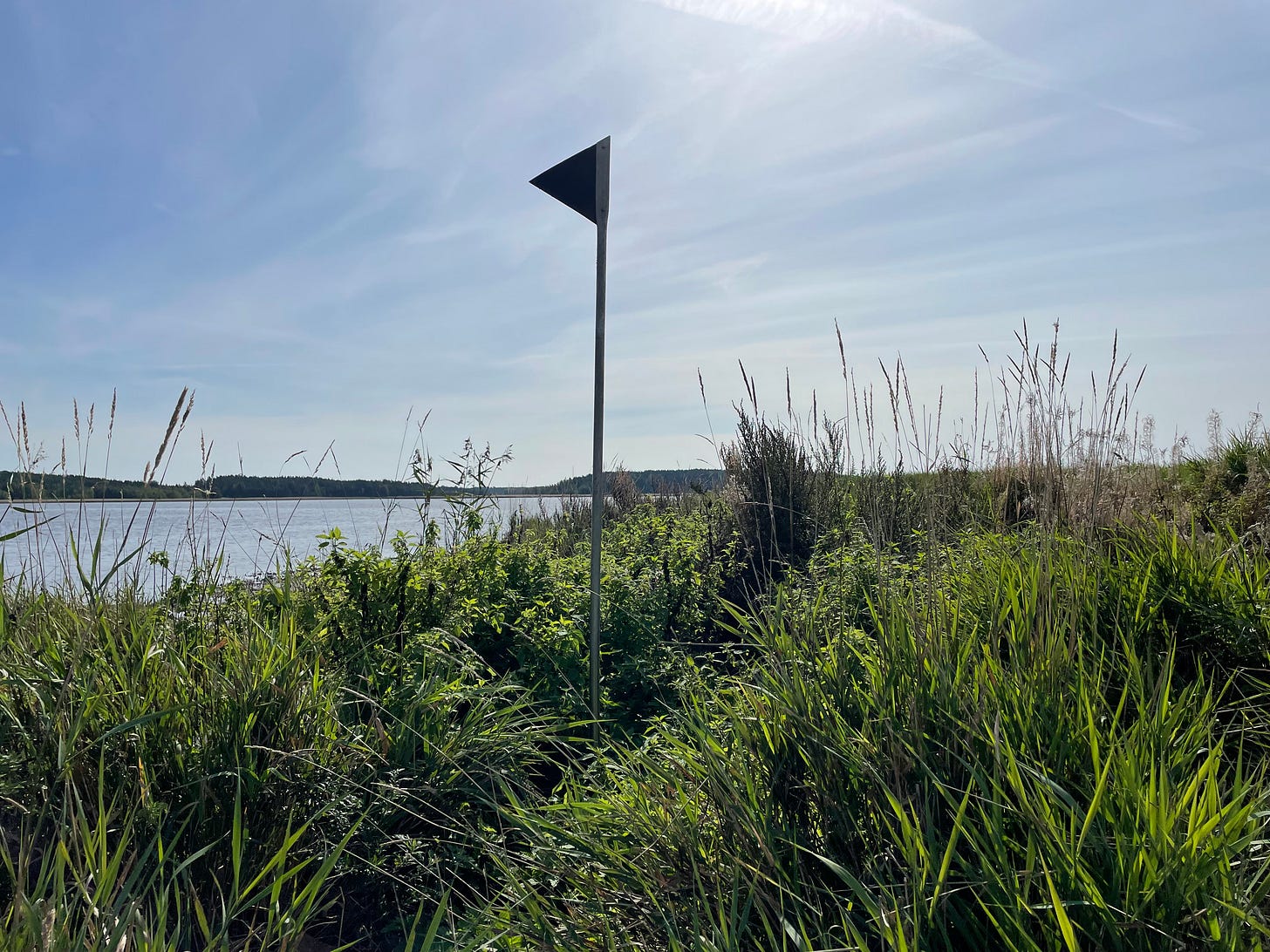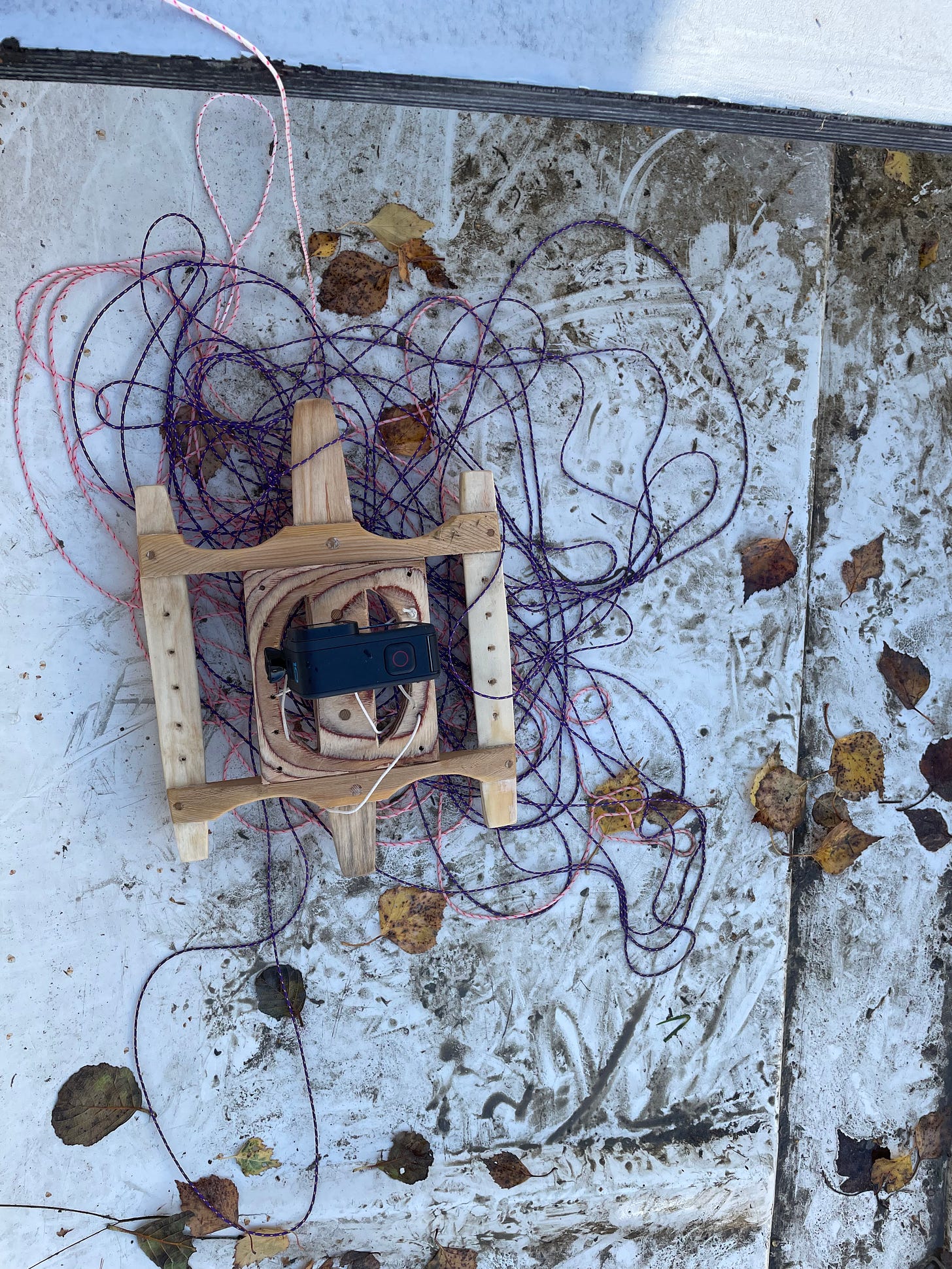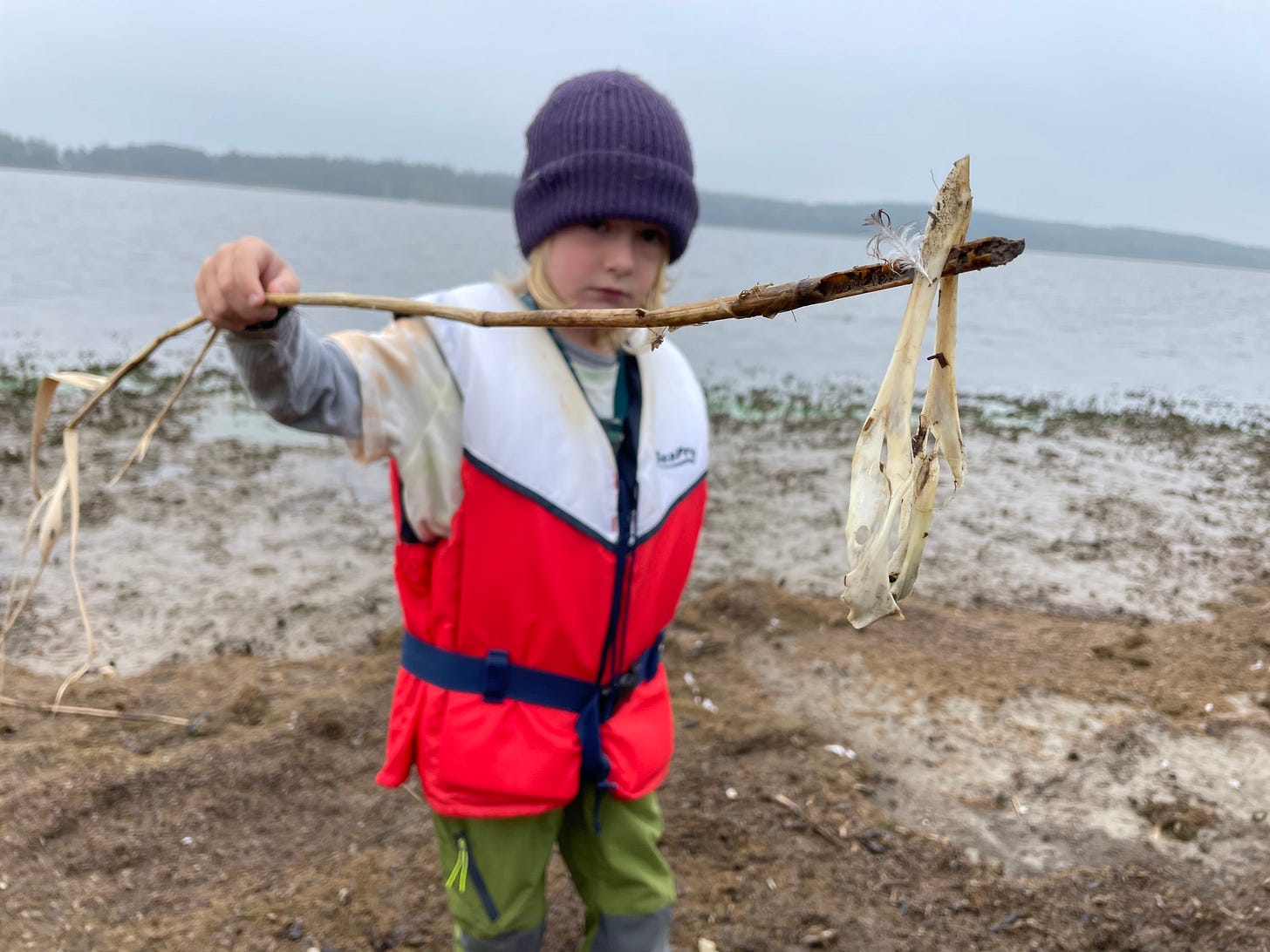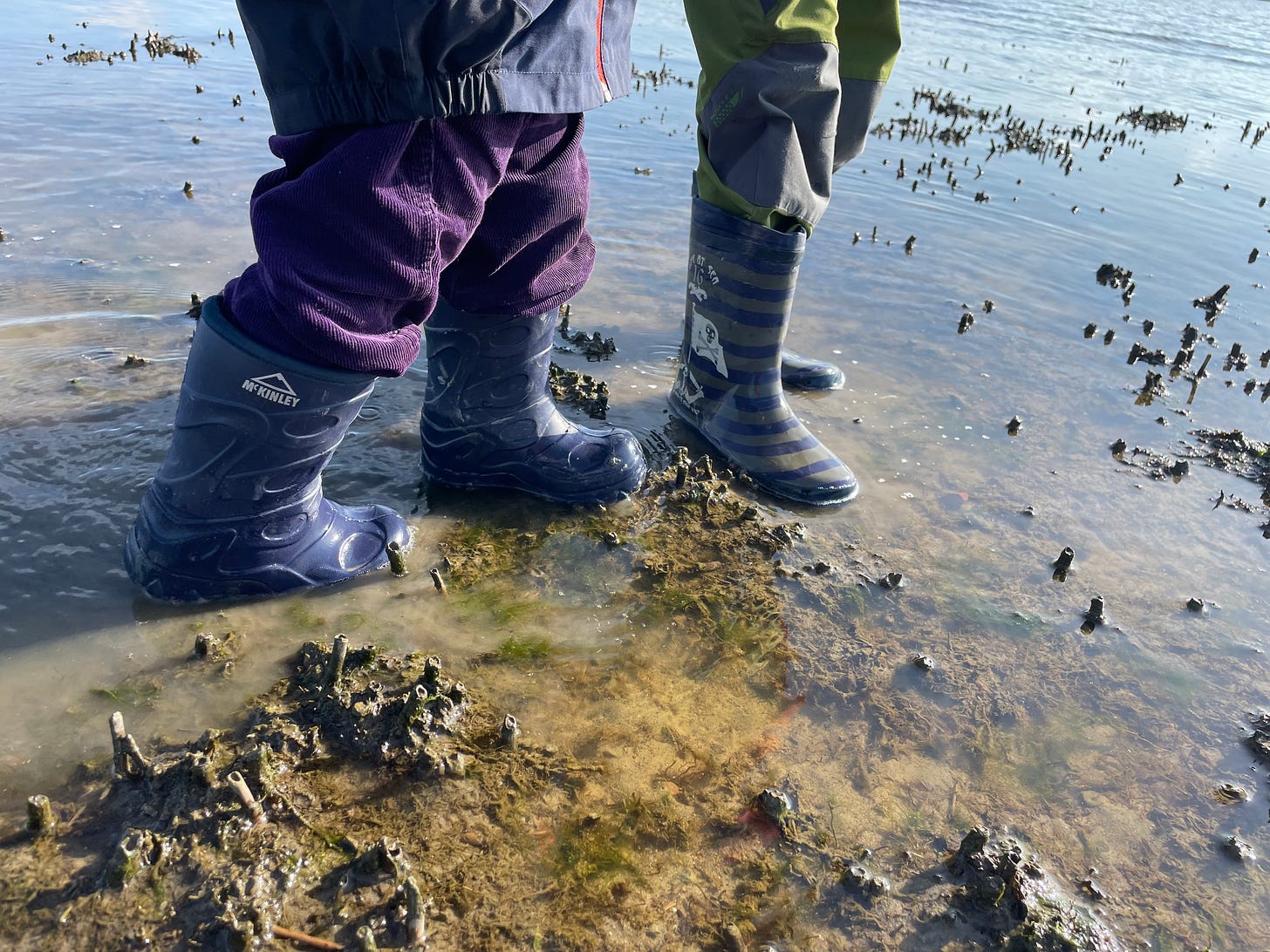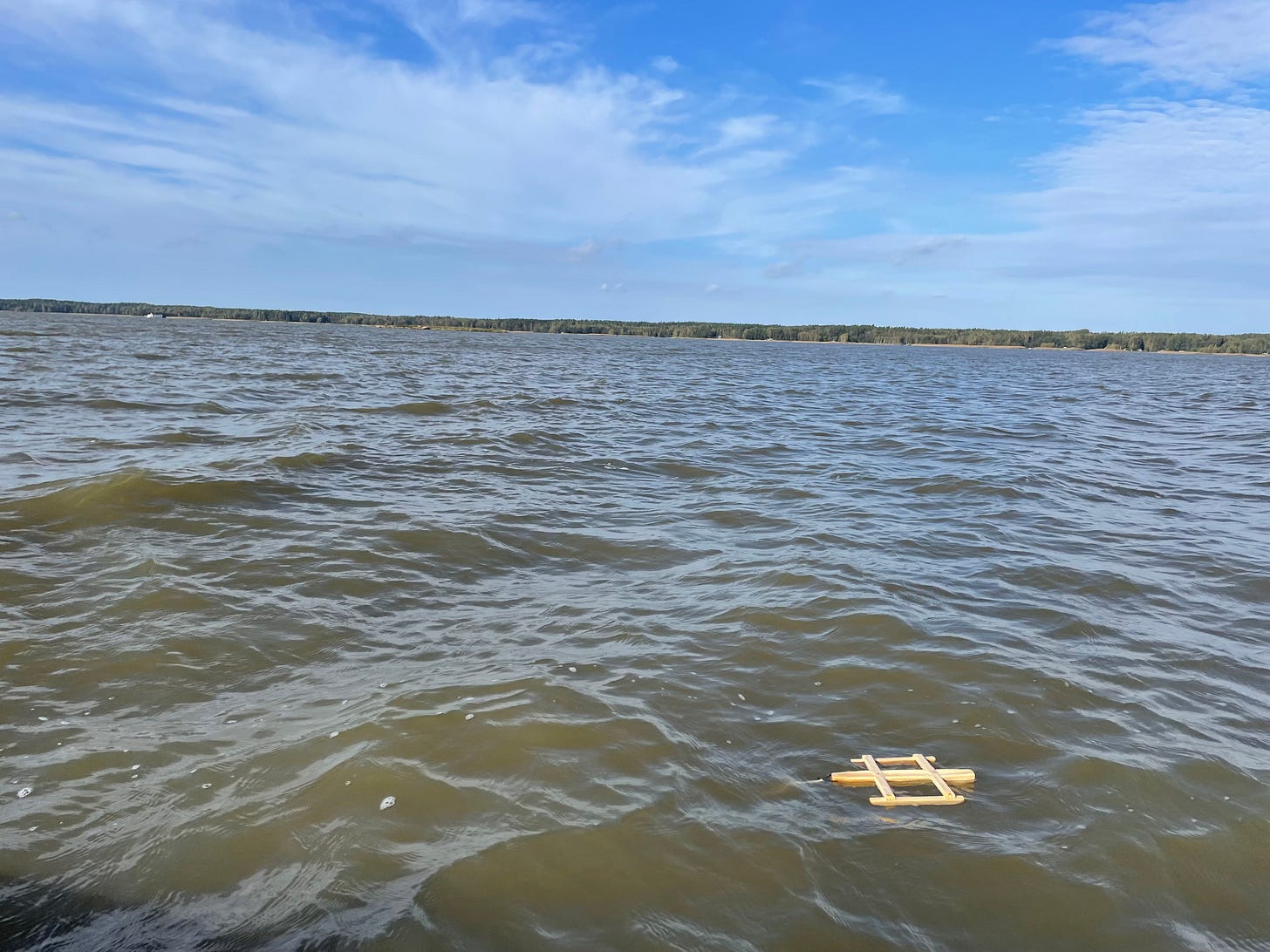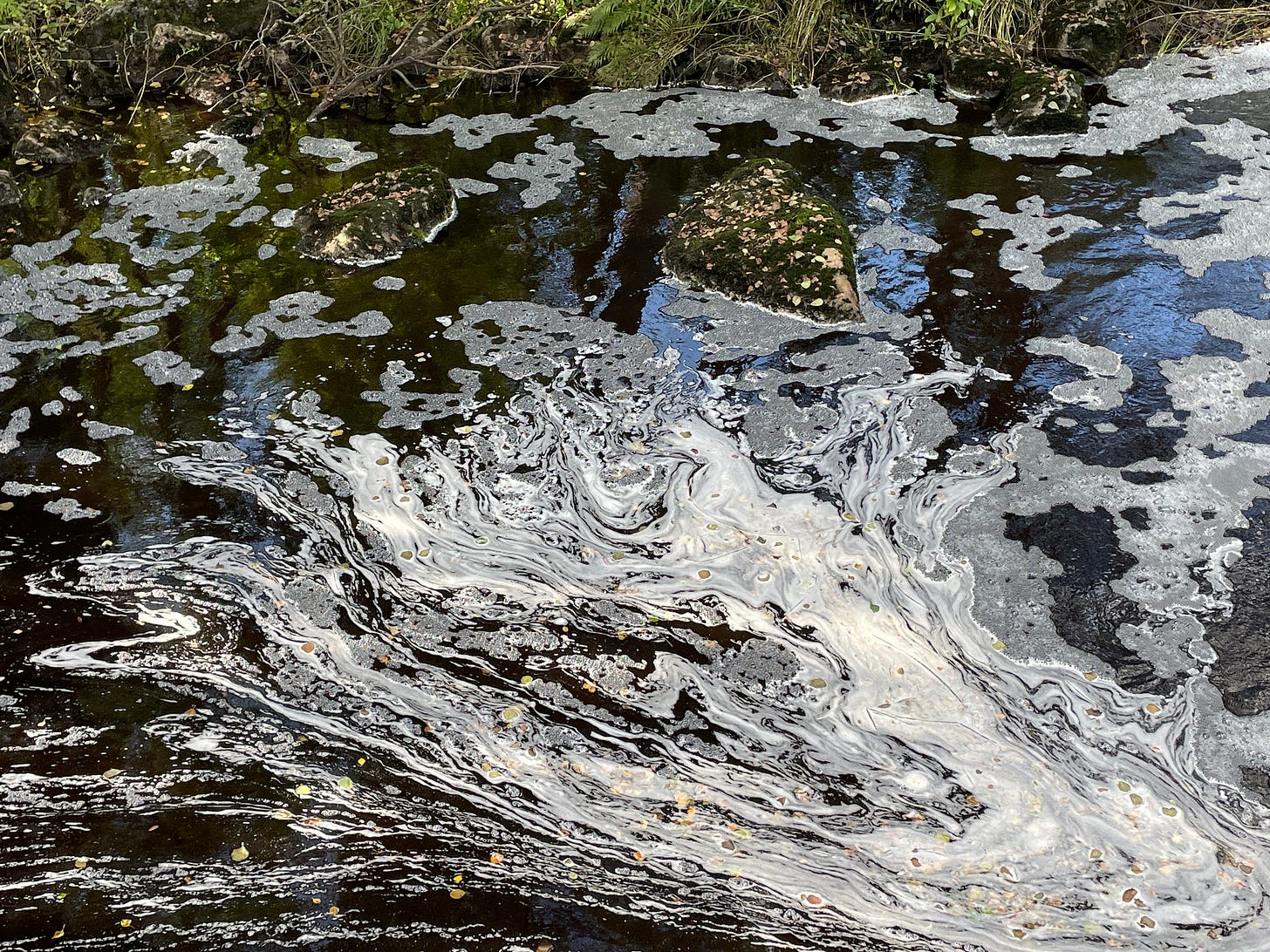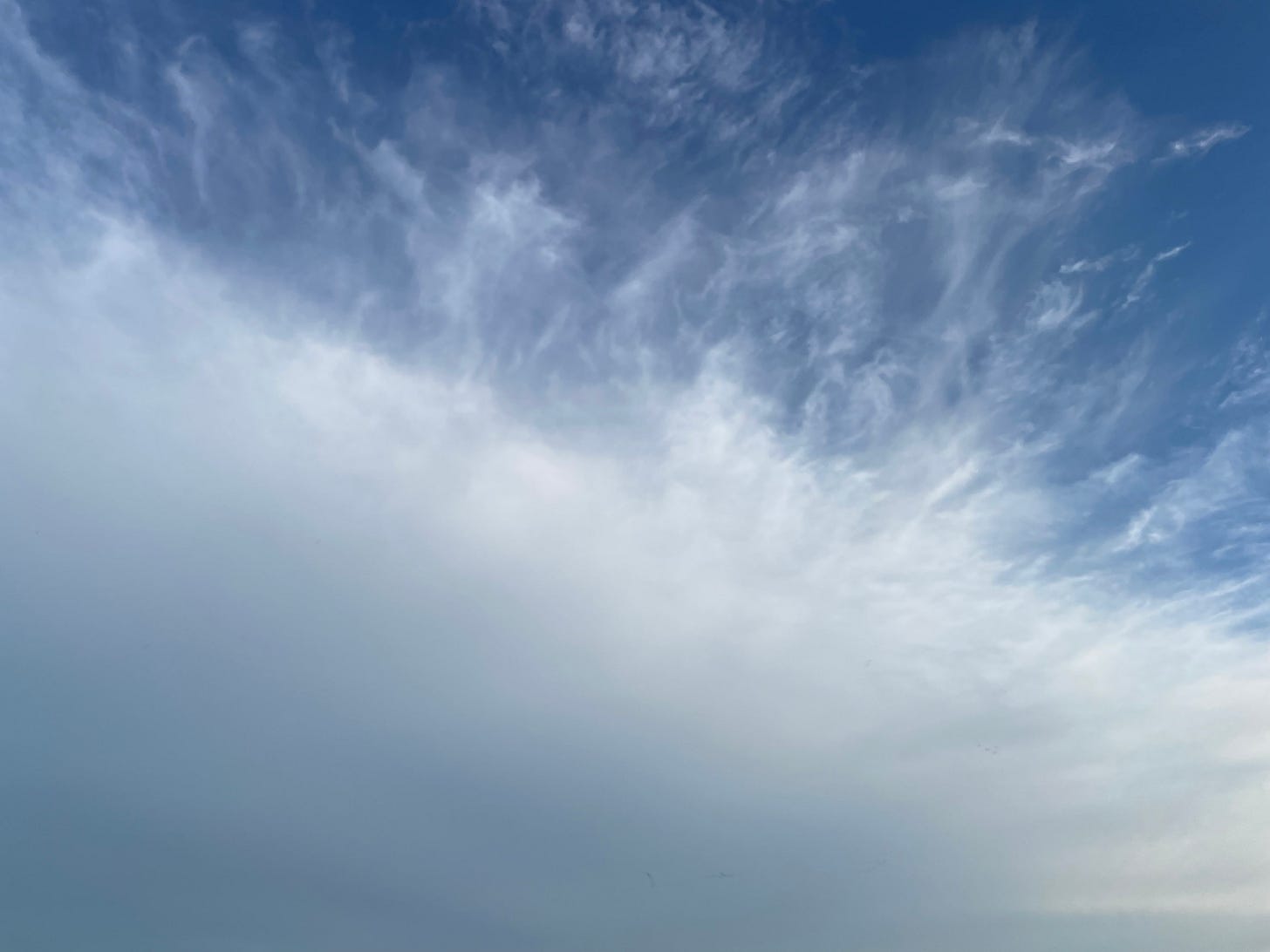Writing on the Water Surface
In the text we explore Writing on the Water's Surface, a subcategory of the arts and research project Pedagogy for Extended-Interspecies Listening...
In the text we explore Writing on the Water Surface, a subcategory of the art and research project Pedagogy for Extended-Interspecies Listening, which arises within the educational and research environment Sea-Water Amplification (SWA).
We focus on the sea-water environment, its specificities and educational possibilities in the field of outdoor pedagogy and seascape epistemology. The text reflects diverse temporal framings, including ecological times, rhythms and patterns of the water surface. Children encounter other time that is not only human or animal, and this time raise fascinating questions and offer many games and movements. The release from structured time and the perception of living times allows us to better perceive and respond to the challenges of our future.
RESEARCH OF THE COMMON WORLD
We try to disconnect and move away from anthropocentric pedagogy and experiment with connecting and representing marine-aquatic environments. We see water movements and activity as a methodology that involves a multi-sensory attention development to direct attention to (diffracted) patterns, ripples and a queer aquatic performativity, focused on changes taking place in near and distant marine-aquatic environments.
You might ask, how do we pay attention to these (live) processes?
More and more we adapt to lives that transcend our own borders. We are building a so-called temporal diversity which, precisely on the basis of shifting, interrupting, disrupting the classic hourly pattern (in education and life), allows us to search for new time opportunities ,that help us to better perceive but also to respond to many challenges and rediscover our future.
So, we ask, what kinds of temporalities animate the worlds of children?
How could we think along with the birds in Saarenaukko Bay (Mietoistenlahti), who are about to make their annual migration to warm landscapes? How could we think along with the time of the forest, moss and lichen immediately surrounding this bay? With the time of the water and the wetlands, whose specific scent seeps far inland?
We propose, that time should be lived in these events, that it should be multiple and more-than-human. We talk about the space-time dimensions of nested time, which extends the notion of time as a representation centered on mankind, so as to acknowledge temporal differences involving generations of living beings, ecological times, different intervals, rhythms, repetitive water-level patterns.
Children in these cases encounter different times, that are neither human nor animal. They encounter the vastness and variety of geological time. These times not only generate, but also require fascinating inquiries. It offers many games, many moves and many laughs.
Moss wonders about the ways of rain
The moss is spongy, fragrant, soaked when the rains come. All living beings owe their lives not only to their ancestors, but also to others, who have fed them again and again, who have fed every living thing for as long as they have lived.
Through rigorous listening to the variety of time frames, can we steer toward a different environmental responsibility?
This text is an invitation to differently oriented attention that has an immediate effect on the kind of education that takes place in the forest or in the classroom or in the ocean.
The only way to experience the forest, the ocean, or the world multiple times, is to sit with the forest, with the ocean, and with the world, allowing the almost imperceptible movements of matter to become worthy of our attention.
Perhaps you are again asking, how to experience the forest, the ocean or the world?
Release your bodies from the clock and settle into other timelines, paying attention to which times are alive and which are not.
Knowing that we are related to everything around us and sharing our breath with all living things, helps us to focus on our responsibility to honor all life forms.
Our activities stem from the need to look after the bodies of water on this planet. Water bodies include not only oceans, rivers, lakes and streams, but also all other human, animal, plant, geophysical and meteorological bodies that contain water.
Imagining yourself as a body of water opens up interesting possibilities for cultivating more environmentally responsible relationships with water. In our case, it is a long-term development of the concept of ecology of practice, that leads precisely to more environmentally responsible action.
During each of our stays, water or the marine-aquatic environment becomes a prerequisite for the development of outdoor pedagogy, as children are encouraged to explore the water in any way for one simple reason; water is a source of life and as such can provide almost unlimited learning opportunities (not just) for pre-school age children. This is why in our artistic research practice, we focus on the marine-aquatic environment. Through these environments, we set in motion epistemologies focused on seascape research.
There are movements and modes of existence, by which the marine-aquatic environment becomes comprehensible and there are also patterns of existence, by which certain bodies come to influence others. With these movements and modes of existence, bodies transform and reshape each other.
All that has been said so far are tools, that somehow help us explain our daily lives, but water in its existence always escapes any effort at understanding.
The stories we find through our practice, tell about the need to get to the water (as close as possible), ideally to become the water and respond to its properties, instead of trying to control the water in any way.
So we ask, what kinds of relationships can we cultivate, if water is life and we are bodies of water?
Water materials bring tension to institutions. Often, this tension and discomfort is addressed by other actors trying to tune into ideas about children's abilities in a complex way. Through listening, we find that it is important, that actors also become listeners to children's words, interests, actions and stories. All these institutional misunderstandings can evaporate, if we carefully monitor children's interest and the urge to play (not only with water).
Our listening to the marine-aquatic environment is also extended by how often we dip into the aquatic environment.
Listening is also hearing.
It should be remembered that the waters also destroy, flood, bring bad news, that in a certain sense, they will always elude us.
How could water thinking work to unblock the dominating institutional paradigms?
In our practice, we try to see beyond the misunderstandings, that can occur, when we listen to marine-aquatic environments in a collective of children and ask; what can water in the educational process teach us, if we assume that we are fully listening?
These questions flow in and contaminate our minds, while we experiment with marine-aquatic practices as if they were something alien in some way. That is, we view water as if we had no prior education and begin to pay attention to how water moves – meandering between us, children, and institutions. How water can connect certain bodies to others. Water is here not to benefit, but to live with and learn from.
Moving water, moving near water can (not only) help children better understand how the world works, where things come from, what is the history of water surface, where did that water surface come from and what created it? What does the water remember? As many oral traditions show, water is a literally an aggregate of stories and history, as well as an initiator of new worlds.
Vava, our elder son, says:
Find a quiet spot and sit quietly.
The bird is in the forest!
Can you see through the skin,
Can you hear with your hands?
Can you dream with your feet?
We're constantly feeding ourselves
and others in a delicate balance.
Greetings from the island 🌋
SWA
Notes: All photos are part of the educational and research environment Sea-Water Amplification (SWA)
The original version of the text was developed in 2023 as part of a research stay at the Finnish SAARI artist residency.
If you would like to learn more about the educational and research environment of Sea-Water Amplification (SWA), visit our website or our Instagram.





